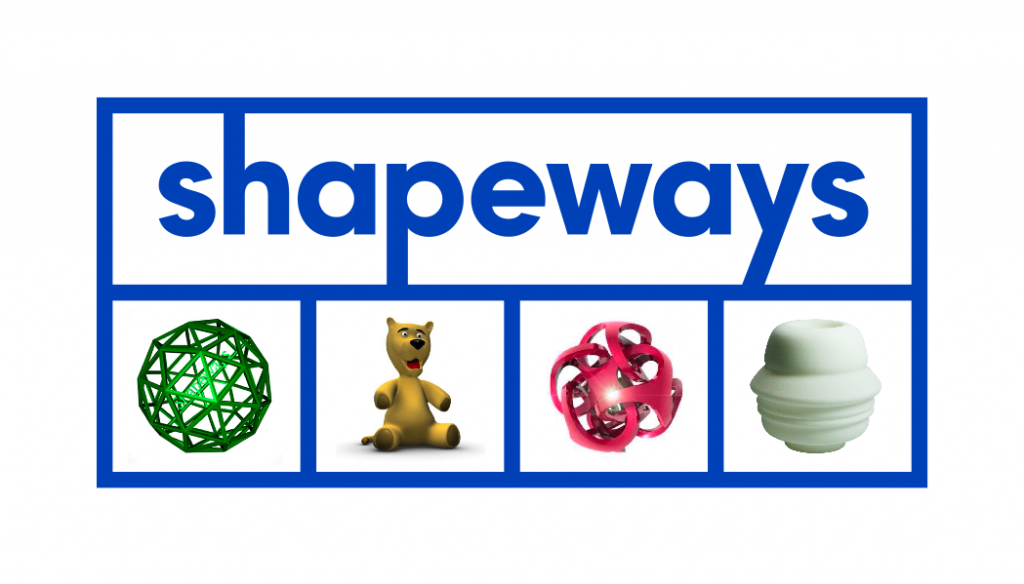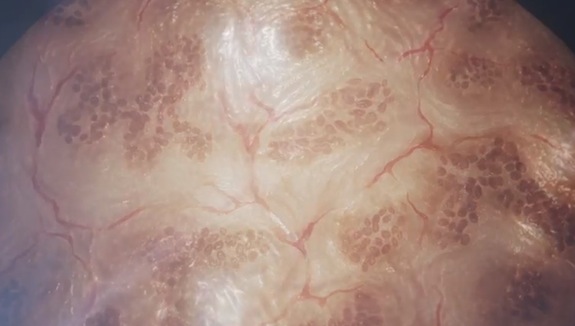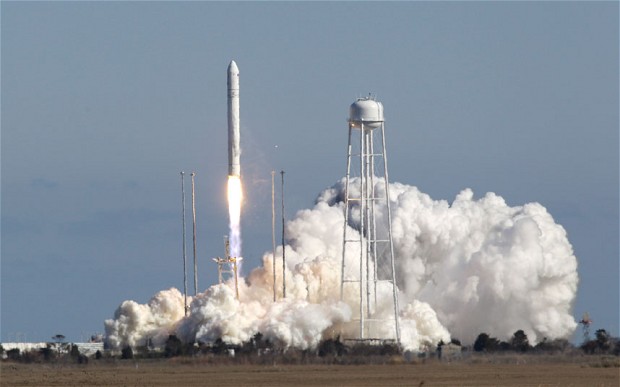What technology and science stories caught my eye this week? Several in biomedicine. And two involving 3D printing, one for making liver, the other for mass customized manufacturing. A forecast of changes to climate zones as our atmosphere continues to heat. And a new commercial rocket joining the competition for low-Earth orbit missions. So here they are:
- New Therapies Create Treatment Options for Neurodegenerative Diseases;
- 3D Printing May Mean Lab-Grown Livers in the Near Future;
- The Market Gives a 3D Printer Company $30 Million to Roll Out Custom Manufacturing;
- Climate Zone Changes from Global Warming to Speed Up as Century Unfolds;
- Antares Rocket Joins Falcon 9 in the Race to Commercial Space.
Boston Universities Discover New Techniques for Treating Parkinson’s and Other Neurodegenerative Diseases
Two studies appeared this last week looking at novel and complimentary ways to attack neurodegenerative diseases. The first, from Northeastern University, involves the development of a gene-based therapy to stop Parkinson’s Disease in its tracks and even reverse the symptoms. The second, from a division of Harvard Medical School and Boston University, announced a new method to bypass the blood-brain barrier to administer treatment to those suffering from neurodegenerative and central nervous system diseases.
The Northeastern research involves the use of nanoparticles containing genetic information that gets introduced through the nose into the brain to reduce the loss of dopamine neurons. With Parkinson’s the symptoms really don’t start to show until 80-90% of dopamine neurons have died. With this treatment early stage Parkinson’s sufferers can receive treatment and begin manufacturing dopamine to stop if not reverse the disease’s progress.
At the Department of Otology and Laryngology, Massachusetts Eye and Ear, part of Harvard Medical School, and at the Biomedical Engineering Department at Boston University, new surgical techniques have discovered a way to create a window into the brain using the patient’s donor tissue.Through the window doctors can deliver molecular-sized drugs that can get by the blood-brain barrier. In the past 98% of drugs are prevented by the blood-brain barrier from being used therapeutically inside the brain. With this new technique we could be witnessing a revolution in treatment of brain and central nervous system diseases.
Need a New Liver? Order it and 3D Print it!
Organovo bioprints! There’s a new verb for you.
The company, located in San Diego, has developed an automated bioprinting platform for fabricating body tissue including parenchymal and non-parenchymal liver cells. It bioprints in a matrix that includes cells from the lining of blood vessels (see image below). In other words the output is compositionally similar to what nature produces.
As reported in NewScientist this week, the company is generating mini-livers, each about a half millimeter in depth and 4 millimeters across. These little livers are being used as predictors to test hormones and drug toxicity. But eventually Organovo plans to produce lab grown chunks of the tissue for transplant to restore diseased livers in humans.
3D Print Manufacturing Gets the Market Nod from Venture Capitalists
Shapeways, the 3D printing company announced in the last week that it had closed on $30 million in new venture capital to add to the $17 million already raised. That’s a pretty impressive amount of money for what many see as no more than an interesting hobby.
But the field of additive manufacturing is taking off and Shapeways is tackling it in a social media way, through membership in an online user community.
If you have an idea for a new product, to use Shapeways you model your design on computer using a 3D CAD program. Shapeways can take input from a wide range of 3D authoring software tools including free ones like Google SketchUp or FreeCAD. Once you have created your computer design upload the file output to the Shapeways community website. Use the menu to choose the materials you want for production. Choices include glass, plastic or metal. Shapeways gives you your unit cost. Accept the quote and your creation gets manufactured. When it’s done Shapeways ships it anywhere in the world. Custom manufacturing for the 21st century.
 Climate Zone Shifts Accelerating in a Warming World
Climate Zone Shifts Accelerating in a Warming World
Remember the weather patterns you used to know in your part of the world. Well don’t blink because there is strong evidence they are going to change and at a faster and faster rate.
A study published in the journal Nature Climate Change last week projects large shifts in climate zones by the end of the 21st century with the pace of shifting accelerating linearly as global temperatures increase. Climate zone change will impact more than 20% of the global land mass.The study reinforces predictions of shrinking polar regions and increasing aridity in equatorial and mid-latitude zones.
What this means for plants and animals is disruption of the environment in which they live. Species will either migrate following the changing climate zones or die. The pace of change may make evolutionary adaptation impossible with only the very flexible surviving.
Move over Falcon 9, There’s a New Gun in Town
It took a few pulls of the trigger this last week but finally the Antares rocket with a dummy payload took off successfully from Wallops Island, Virginia. So now there are two commercial low-Earth orbit rocket launchers that NASA, other space agencies, and private companies can consider when launching a satellite.
Antares is a product of Orbital Sciences. The rocket stands 40 meters (133 feet) in height and weighs 240,000 kilograms (530,000 pounds) fully fueled at time of launch. It can deliver a 5,000 kilogram (11,000 pound) payload to orbit. Not quite as powerful as SpaceX’s Falcon 9 which can deliver twice the payload, Antares should have enough muscle for most low-Earth orbit jobs.
A Postscript
This week saw a spike in new subscribers. Always appreciated. If you are a regular reader of this blog and have not subscribed, it’s free and easy to do. Just click on subscribe near the bottom right of any article or the home page and provide an email address. That way you don’t have to find me. I’ll find you and postings will appear in your email inbox. Once again, thanks for visiting and please come back again often.
– Len Rosen


















